Figures in Rugs
It’s in the Detail
One of the joys of antique rugs is the unexpected discovery of random figures hidden in the often complex designs. This can come in the form of an animal, person or even a random household item (as seen in the Samovar below which took me several weeks to notice!) and hints at a playfulness on the part of the weaver.
Weaving figures into rugs has a long tradition in many areas, especially nomadic tribes such as the Qashqai of south west Persia as well as many of the antique rugs woven in the Caucasus mountains of Azerbaijan and Armenia.
Ultimately, the interesting point is that, through personality and humour, this creates a connection across time, geography and culture between the weaver and the owner of the rug.
Here are a few of my favourite examples, both past and present.
Antique Persian Sarouk Rug circa 1900.
Vintage Afghan Belouch ‘War Rug’
Balouch
The Balouchi tribes that straddle north-east Persia and Afghanistan have a long history of weaving figures in their rugs and this is an interesting example of rugs woven during the Soviet occupation of the 1980’s. Usually limited to war paraphernalia such as tanks, planes and Kalashnikovs, this rug is unusual because of the human figures - this would indicate that it was woven for an important tribal family.
Antique Persian Tehran Rug
Antique Persian Qashqai Rug
Antique Caucasian Lesghi Rug
Antique Persian Bidjar Rug
Antique Caucasian Rug
Khamseh
The Khamseh is a confederation of five tribes in the province of Fars in southwestern Iran. They are renowned for their rug weaving which often include figures such as this example woven circa 1890 with a multitude of chickens. For more information on this particular piece, please click here.
Antique Tehran Rug
Finer rugs such as this antique Tehran also have a long history of weaving figures in their rugs, especially from the cities of Isfahan, Qum, Tabriz and Tehran. Many of these are either ‘hunting scene’ or ‘tree of life’ designs. I don’t see many with elephants though!
Qashqai
The Qashqai are a nomadic tribe from south-west Iran who often include small figures in their rugs, such as this example woven circa 1900 with numerous birds, animals and figures (including this lady with a particularly funky skirt) throughout the field. Due to the fact that the weavers don’t work to set designs, these are often highly stylised and naive but utterly charming. For more information on this piece, please click here.
Qashqai (again!)
In the interests of equality, here is what is obviously a Qashqai man!
Caucasian Rugs
Antique Caucasian rugs have become highly collectible over the years and often have bold geometrical designs which often include figures. This example is an antique Lesghi rug, woven circa 1920 with two naive dogs looking like they are guarding the rug!
Antique Bidjar
Size isn’t everything! Sometimes the more interesting discoveries are the small ones that are not immediately apparent, like this tiny bird in the field of this 1920’s Bidjar rug.
Another Caucasian!
Possibly my favourite example ever! This rug was woven in the Caucasus mountains of Azerbaidjan circa 1920. In a medallion of numerous birds there is a solitary and quite random camel! I can just imagine the weaver chuckling to herself!
-
August 2025
- Aug 7, 2025 An Antique Tribal Rug with a Famous Connection Aug 7, 2025
-
January 2025
- Jan 23, 2025 Why Antique Rugs Are Better for the Planet Jan 23, 2025
-
October 2024
- Oct 3, 2024 Why does a rug change colour? Oct 3, 2024
-
October 2023
- Oct 26, 2023 Isfahan, the History Behind the Rugs Oct 26, 2023
-
July 2023
- Jul 6, 2023 Antique Chanteh Bags Jul 6, 2023
-
April 2023
- Apr 29, 2023 Funky Qashqai Kilims Apr 29, 2023
-
January 2023
- Jan 8, 2023 Heriz-mania Jan 8, 2023
-
April 2022
- Apr 7, 2022 My Journey with the OCM Map! Apr 7, 2022
-
January 2022
- Jan 5, 2022 The Charm of the Qashqai Jan 5, 2022
-
January 2021
- Jan 26, 2021 Figures in Rugs Jan 26, 2021
-
November 2020
- Nov 26, 2020 Buyer's Guide Nov 26, 2020
-
May 2020
- May 28, 2020 Chinese Art Deco Carpets May 28, 2020
-
June 2019
- Jun 1, 2019 And another one! Jun 1, 2019
-
October 2014
- Oct 1, 2014 New Outlet! Oct 1, 2014
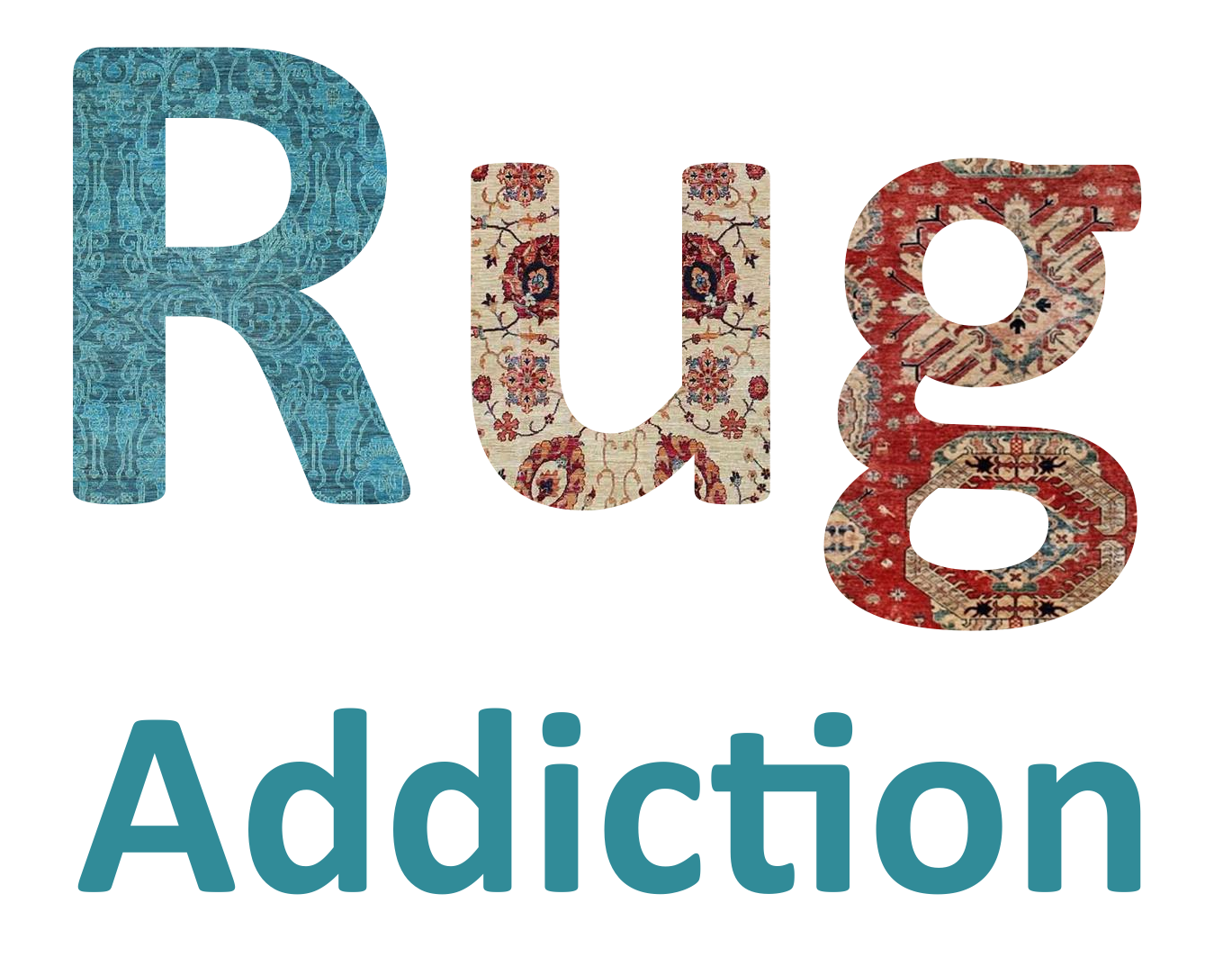
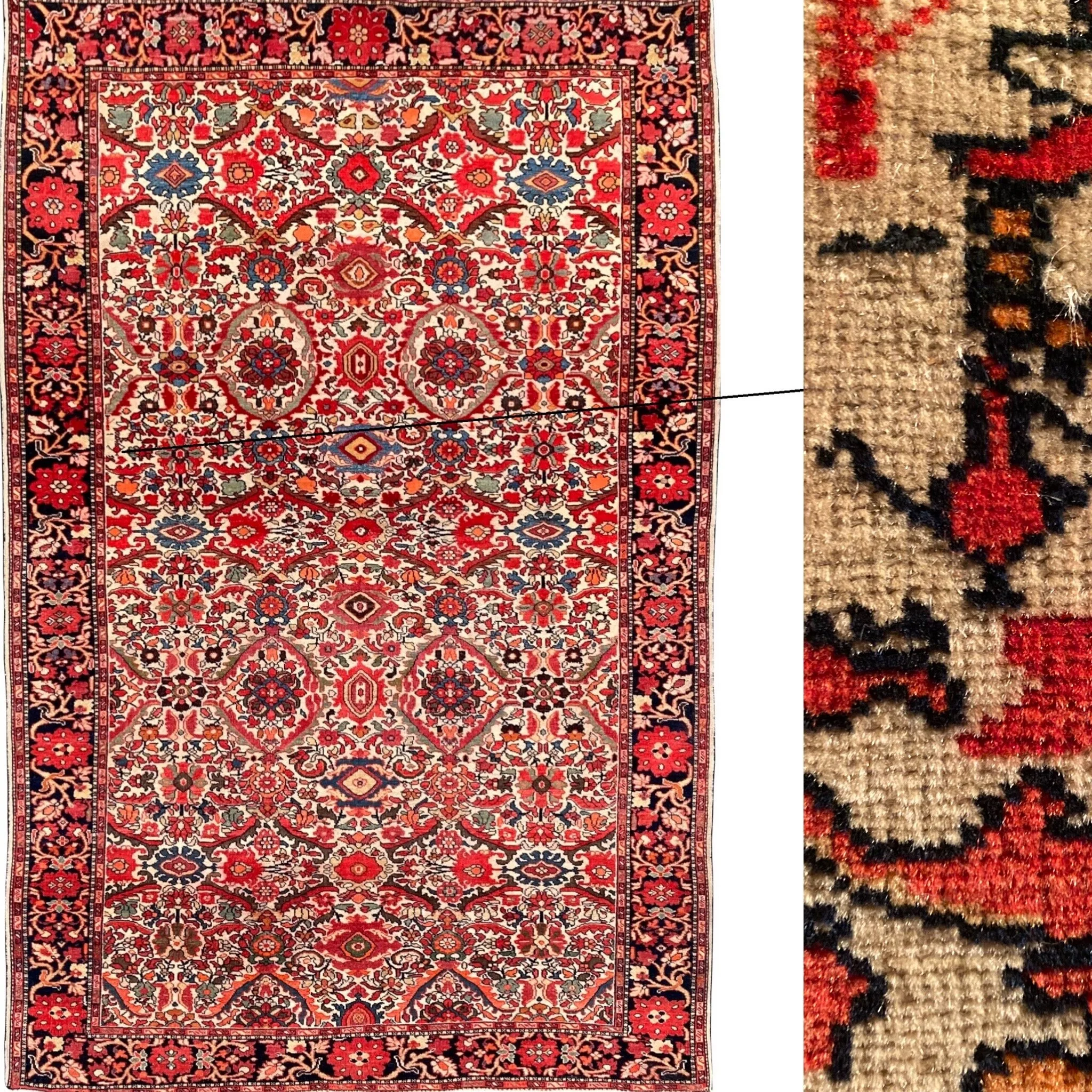



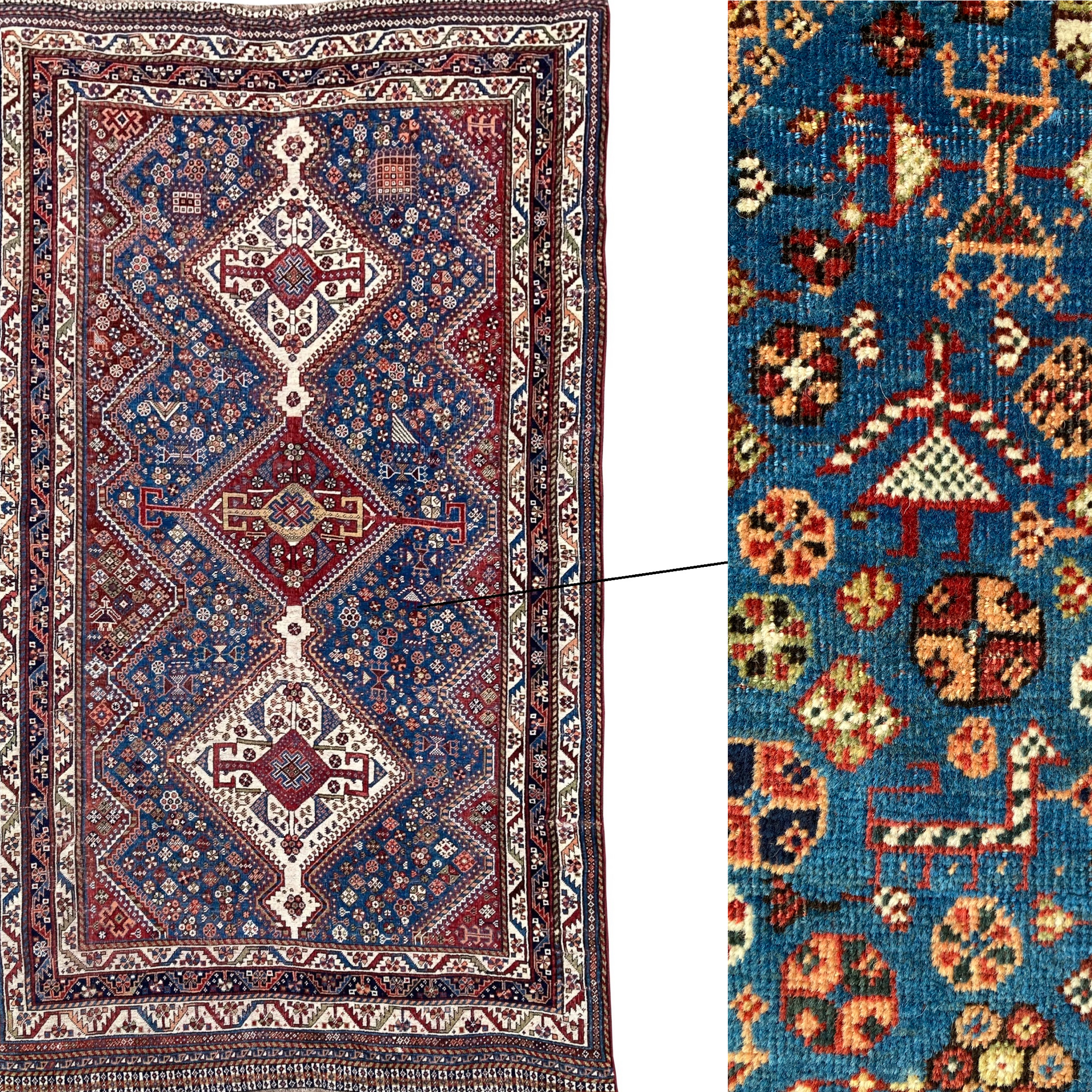


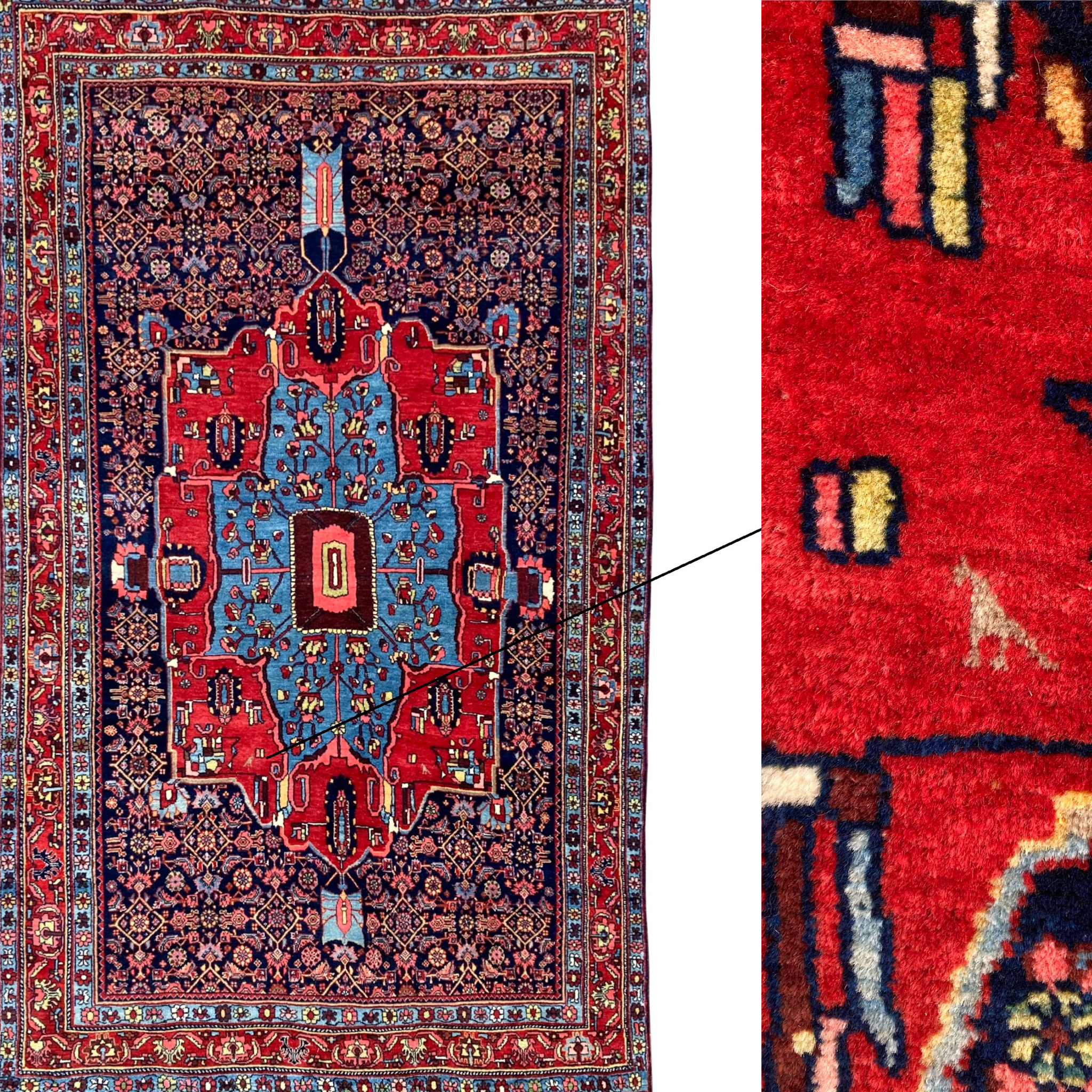




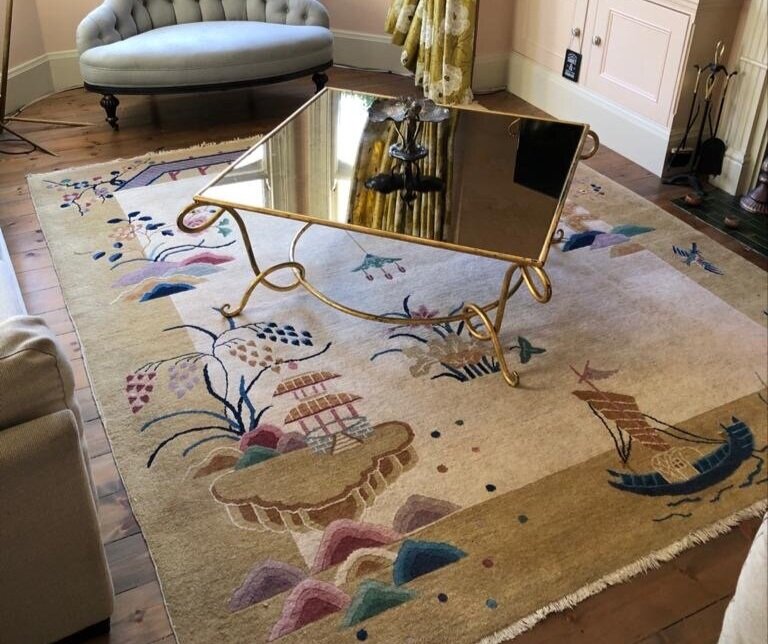
A stunning Art Deco carpet, handwoven in China circa 1920 with an unusual design depicting the eight symbols of Buddhism on a raspberry red field and blue border. For more information on the symbols, please visit: https://en.wikipedia.org/wiki/Ashtamangala
Size: 3.02m x 2.16m (9ft 11in x 7ft 1in)
This rug is in good condition with light, age related wear. It has been professionally cleaned but there are a few barely visible surface marks (see photos). Fringes and selvedges are original and secure.
Free worldwide shipping.
All our rugs are covered by our comprehensive returns policy